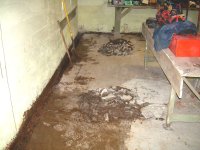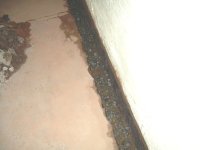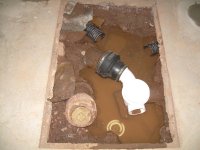firemen122
Silver Member
Eddie I will have to agree to disagree with you. Concrete is porous and is permeable. It always has moisture in it and the moisture can move one way or the other. I am trying to tell you that in areas of florida if you do not use a vapor barrier in some places that your socks can and will get damp without hvac pulling moisture out. The fire station I am sitting in right now is built on ground that never dries, all year round there is standing water around and moisture under this structure it is a classic example. Volunteers built the front half years ago and used no barrier, the back was built later with barrier. lose power and ya better be careful walking on the front floors because they are wet and slick, back floors stay dry as a bone. Also if you have impending flame on a concrete for any length of time ya have to watch out for spalding. Spalding is when the moisture in the concrete becomes steam. Water expands ration of 17,000 to 1. Spalding is where chunks of concrete violently let loose from the main slab, wall, ceiling etc. Remember physics tells us a hummingbird cannot fly.
UOTE=EddieWalker;1599382]JB,
I enjoyed reading all three links, but don't think we're talking about the same thing. In the links you provided, the problems are drainage related. While a few methods were mentioned to avoid this, I didn't see where moisture was able to get through a solid slab. Cracks were a big factor in the amount of moisture that was able to get through the slab, but only with allot of moisture in the soild benieth the slab. Again, this isn't apples to apples. I can see the challenge in diagnosing these issues in flooring problems, but don't see how it relates to the misconception that a concrete slab on a properly built pad allows water to pass through it.
Eddie[/QUOTE]
UOTE=EddieWalker;1599382]JB,
I enjoyed reading all three links, but don't think we're talking about the same thing. In the links you provided, the problems are drainage related. While a few methods were mentioned to avoid this, I didn't see where moisture was able to get through a solid slab. Cracks were a big factor in the amount of moisture that was able to get through the slab, but only with allot of moisture in the soild benieth the slab. Again, this isn't apples to apples. I can see the challenge in diagnosing these issues in flooring problems, but don't see how it relates to the misconception that a concrete slab on a properly built pad allows water to pass through it.
Eddie[/QUOTE]


